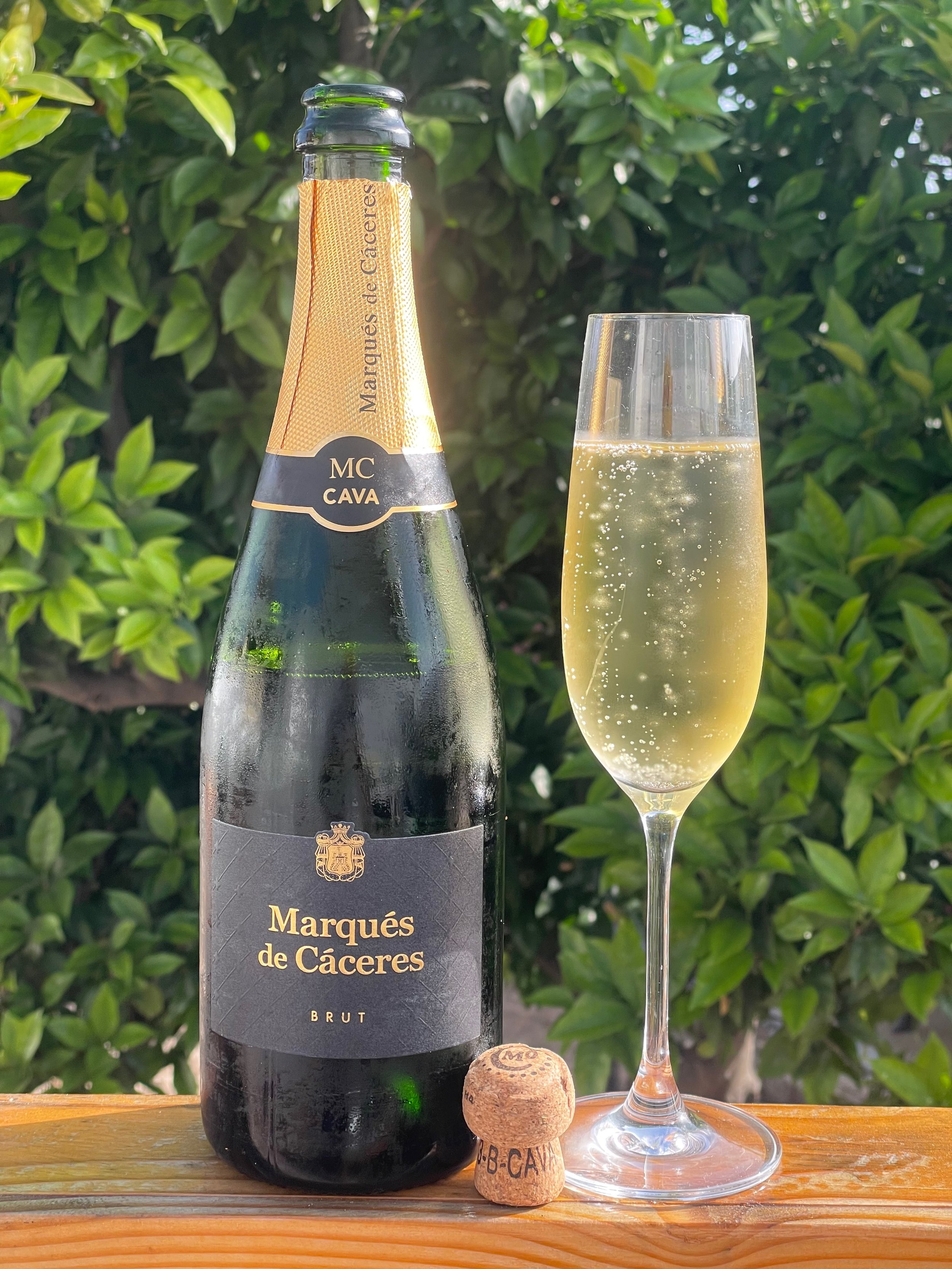Marqués de Cáceres Cava ($12.99)
Marqués de Cáceres (Mar-kez Day Kass-er-rus) winery is located in Rioja Alta, Spain. It was founded in 1970 by the Forner family, an enterprising family that has been in the wine trade for five generations. The brand remains family-owned and women-run, led by CEO Cristina Forner. Marqués de Cáceres is one of the most widely distributed Spanish wines in the US.
In the 1800s, Spain began producing sparkling wines to mimic their French neighbor's Champagne and they called it Champaña. But in the 1970s, French regulations were put into place such that only sparkling wine produce in the Champagne region of France could rightfully be called Champagne. So, the Spanish re-named their sparkling wine for the caves or cellars where the sparkling wine was kept for aging. Hence the name Cava.
This Marqués de Cáceres Cava is produced from 50% Xarel-lo, 30% Macabeo, 20% Parellada grapes. It is pale gold in color with a delicate white flower aroma. On the palate, it has flavor of crisp apple flavor with fine and persistent bubbles. This one is best served cold!
This Cava from Marqués de Cáceres is very tasty and refreshing while being affordable and attainable. A great fit as this week’s Behind the Cork™ Wine of the Week. Cheers!
Disclosure of Wine Sample Submission: I received this sample at no cost for review.
Media Sample Provided by Marqués de Cáceres and Vineyard Brands






